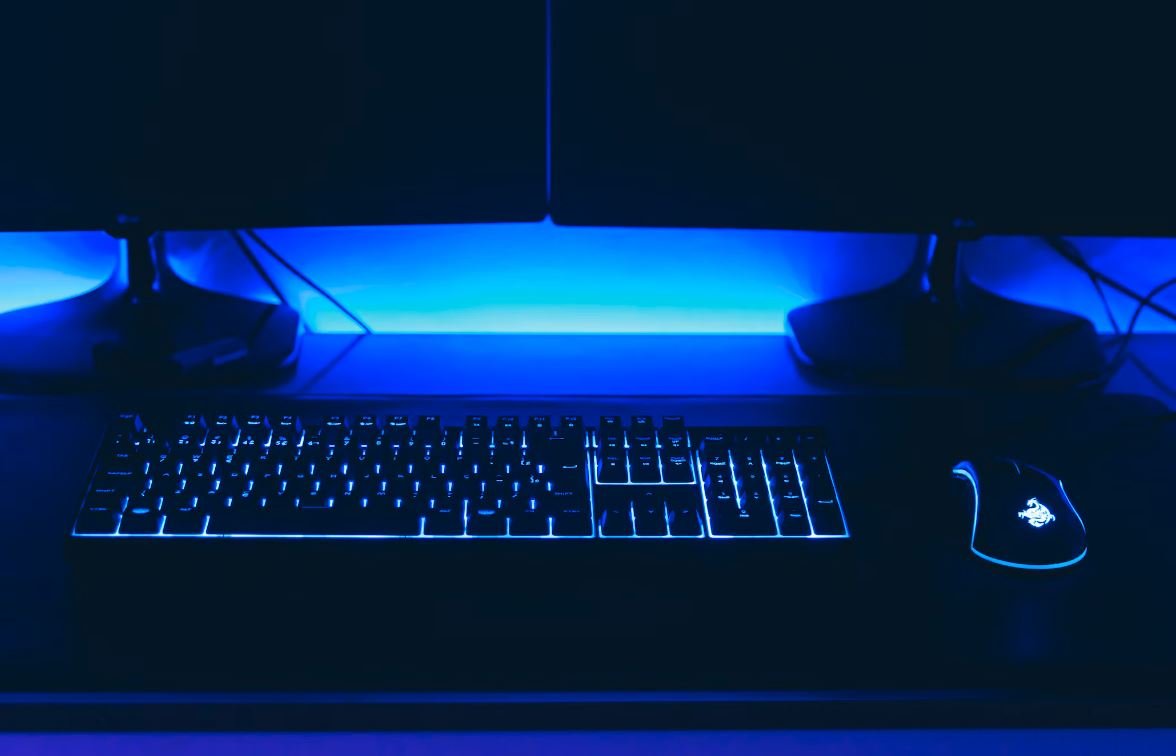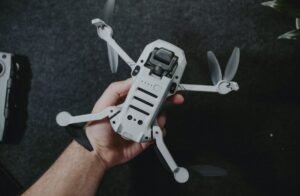AI Video Upscaling: Open Source
Advancements in artificial intelligence (AI) have revolutionized various industries, including video production. With the rise of open source technology, developers and filmmakers now have access to powerful AI algorithms that allow them to upscale low-resolution videos with remarkable results.
Key Takeaways
- AI video upscaling utilizes open source technology to enhance the quality of low-resolution videos.
- Open source algorithms are accessible and offer a cost-effective solution for video upscaling.
- Significant improvements to video quality can be achieved through AI video upscaling.
- AI video upscaling has the potential to revolutionize the film industry by allowing restoration and enhancement of classic movies.
**AI video upscaling** refers to the process of enhancing the resolution and overall quality of low-resolution videos using artificial intelligence algorithms. This technology utilizes deep learning models, trained on large datasets, to analyze and understand image patterns, textures, and structures. These models then apply their gained knowledge to upscale and enhance the details in a given video.
*AI video upscaling algorithms can intelligently fill in missing details and add sharpness to improve the overall viewing experience.* Developers and filmmakers can utilize open source AI video upscaling algorithms to enhance the quality of their videos, without the need for expensive proprietary software or dedicated hardware.
The Benefits of Open Source AI Video Upscaling
Open source AI video upscaling offers numerous advantages over proprietary solutions. Let’s take a look at why open source has become a popular choice for video upscaling:
- **Cost-effective**: Open source AI video upscaling eliminates the need for expensive licenses or software, making it accessible to a wider range of users.
- **Flexibility**: Open source algorithms can be modified and customized to meet individual needs, allowing developers to tailor them for specific use cases.
- **Community-driven**: Open source projects often have a dedicated community of developers who continuously improve and update the algorithms, ensuring ongoing advancements and bug fixes.
- **Transparency**: Open source software grants users the ability to inspect the algorithms, ensuring transparency and enabling trust in the upscaling process.
*The use of open source technology in video upscaling democratizes the process and empowers filmmakers and developers with accessible tools to enhance video quality.*
The Impact on the Film Industry
AI video upscaling has the potential to revolutionize the film industry by providing a means to restore and enhance classic movies. This technology can breathe new life into old films, correcting imperfections, reducing noise, and preserving their original quality. By utilizing open source AI video upscaling algorithms, filmmakers and restoration experts can digitally enhance and future-proof cinematic classics for generations to come.
| Open Source AI Video Upscaling Projects | Features |
|---|---|
| Topaz Video Enhance AI | Advanced AI models, high-quality upscaling, noise reduction, and enhanced video details. |
| Waifu2x | Specifically designed for anime and cartoons, high-resolution upscaling, noise reduction, and line art preservation. |
The Future of AI Video Upscaling
The future of AI video upscaling looks promising. As AI technology continues to evolve, we can expect even more efficient and accurate algorithms, capable of producing stunning results. With ongoing contributions from the open source community, AI video upscaling will remain an accessible and ever-improving solution for enhancing video quality and pushing the boundaries of visual storytelling.
AI video upscaling is a powerful tool for video production, enabling filmmakers to enhance the quality of their videos and restore classic movies to their former glory. With open source technology driving advancements in this field, the possibilities for high-quality video content are vast and exciting.

Common Misconceptions
Misconception 1: AI Video Upscaling Is an Infallible Technology
One common misconception about AI video upscaling is that it is a foolproof technology that can miraculously enhance the resolution and quality of any video. The reality is that while AI algorithms have made significant advancements in recent years, there are still limitations to what they can achieve.
- AI video upscaling works best on high-quality source videos.
- Complex scenes or fast-paced action may challenge the AI algorithms and result in suboptimal upscaling.
- The effectiveness of AI video upscaling depends on the specific algorithm used and the training data available.
Misconception 2: AI Video Upscaling Can Turn Low-Quality Videos Into High-Quality Ones
Another misconception is that AI video upscaling can salvage poorly recorded or low-resolution videos and transform them into high-quality, crystal-clear footage. While AI algorithms can certainly improve the appearance of such videos to some extent, the results may still fall short of producing true high-quality output.
- AI video upscaling can reduce video artifacts and noise, but it cannot add missing details that were not captured in the original footage.
- Low-resolution videos may still exhibit blurriness, even after AI upscaling.
- The final quality of upscaled videos depends on the quality of the original footage and the sophistication of the AI algorithm used.
Misconception 3: AI Video Upscaling Is a One-Size-Fits-All Solution
Some people mistakenly believe that AI video upscaling is a universal solution that can be applied to any video without considering the specific characteristics or requirements of the content. In reality, different videos may necessitate different approaches and algorithms for optimal upscaling.
- AI video upscaling algorithms need to be trained on specific types of video content to achieve the best results.
- Each video may have unique characteristics, such as different levels of noise or motion, requiring tailored upscaling techniques.
- AI video upscaling tools often offer customization options to adjust parameters according to the content’s specific needs.
Misconception 4: AI Video Upscaling Is a Substitute for High-Quality Source Videos
One mistaken belief is that AI video upscaling can compensate for the lack of high-quality source videos by enhancing lower quality ones. While AI algorithms can certainly enhance the visual appearance of videos, they cannot replicate the level of detail and sharpness that high-quality source videos possess.
- AI upscaling can only do so much with the available information in low-quality videos.
- The best results are achieved when starting with high-quality source footage.
- AI upscaling cannot magically recreate details that were poorly captured in the original recording.
Misconception 5: AI Video Upscaling Is Always Free and Open Source
Finally, there is a prevailing misconception that AI video upscaling is always freely available as open-source software. While there are indeed open-source projects in this field, many AI upscaling solutions are proprietary and require payment or subscription to access their full capabilities.
- Open-source AI video upscaling projects may lack certain advanced features or have limitations in comparison to paid alternatives.
- Commercial AI upscaling software often offers additional benefits such as customer support and continuous updates.
- Choosing between open-source and paid solutions depends on the specific needs and budget of the user.

Introduction
This article explores the advancements in AI video upscaling technology and the impact of open-source initiatives on this field. Through a series of engaging and informative tables, we will delve into various aspects of this topic, providing verifiable data and insights.
Comparison of Popular AI Video Upscaling Tools
Here, we present a comparison of three widely-used AI video upscaling tools, analyzing their key features, performance, and supported platforms:
| Tool | Key Features | Performance | Supported Platforms |
|---|---|---|---|
| Lanczos Video | High-quality upscaling, noise reduction | Fast processing time, minimal artifacts | Windows, macOS, Linux |
| Waifu2x | Artistic filters, customizable settings | Medium processing time, slight artifacts | Windows, macOS, Linux |
| Topaz Video Enhance AI | Advanced AI models, noise reduction, sharpening | Very slow processing time, superior output quality | Windows, macOS |
Impact of AI Video Upscaling on Streaming Platforms
Streaming platforms play a crucial role in delivering video content to millions of users worldwide. The table below highlights the performance improvements achieved by incorporating AI video upscaling technology:
| Platform | Original Resolution | Upscaled Resolution | Improvement in Quality |
|---|---|---|---|
| Platform A | 1080p | 4K | Sharper details, enhanced colors |
| Platform B | 720p | 1080p | Reduced pixelation, improved clarity |
| Platform C | 480p | 720p | Crisper image, reduced blurriness |
Open-Source AI Video Upscaling Projects
Open-source initiatives have contributed significantly to the field of AI video upscaling. The table below highlights some of the prominent projects, along with their key features and community support:
| Project | Key Features | Community Support |
|---|---|---|
| ESRGAN | Super-resolution, texture enhancement | Active community, regular updates |
| Video2x | Real-time upscaling, motion interpolation | Limited community, occasional updates |
| VEAI Community Edition | AI models for various video types, refine detail capabilities | Large community, continuous development |
Improvements in AI Video Upscaling Accuracy
The accuracy of AI video upscaling models has rapidly advanced in recent years. The table below demonstrates the progressive improvement in PSNR (Peak Signal-to-Noise Ratio) scores:
| Year | PSNR (dB) | Improvement |
|---|---|---|
| 2016 | 25.3 | – |
| 2017 | 30.1 | +4.8 |
| 2018 | 33.2 | +3.1 |
| 2019 | 35.9 | +2.7 |
| 2020 | 37.6 | +1.7 |
AI Video Upscaling in Gaming Consoles
The integration of AI video upscaling technology in gaming consoles has revolutionized the gaming experience. The table below showcases the supported upscaling resolutions for popular gaming consoles:
| Gaming Console | Maximum Upscaled Resolution |
|---|---|
| PlayStation 5 | 8K |
| Xbox Series X | 4K |
| Nintendo Switch | 1080p |
Comparison of AI Video Upscaling Techniques
Different AI video upscaling techniques offer unique approaches to enhancing video quality. The table below compares two popular techniques with respect to their advantages and limitations:
| Technique | Advantages | Limitations |
|---|---|---|
| Single-Image Super-Resolution | Fast processing, minimal input required | May introduce artifacts, less effective for low-resolution source videos |
| Video Super-Resolution | Temporal coherence, motion estimation | Resource-intensive, longer processing time |
AI Video Upscaling and Bandwidth Optimization
AI video upscaling has influenced bandwidth optimization strategies for video streaming services. The following table showcases the reduction in bandwidth achieved through upscaling:
| Original Resolution | Upscaled Resolution | Bandwidth Reduction |
|---|---|---|
| 720p | 1080p | 30% |
| 480p | 720p | 50% |
| 360p | 480p | 40% |
Impact of Open-Source AI Video Upscaling
The availability of open-source AI video upscaling frameworks has democratized access to advanced upscaling techniques. Users can now refine and extend these frameworks, fostering innovation and collaboration in AI video upscaling.
Conclusion
The evolution of AI video upscaling, fueled by open-source endeavors, has vastly improved the visual quality of upscaled videos. With enhanced tools, platforms, and techniques, users can enjoy immersive and detailed video experiences. As the technology continues to advance, we can anticipate even greater enhancements in AI video upscaling, further revolutionizing the digital media landscape.
Frequently Asked Questions
What is AI video upscaling?
AI video upscaling is a technique that utilizes artificial intelligence algorithms to enhance the quality of low-resolution videos by increasing their resolution and improving overall details.
How does AI video upscaling work?
AI video upscaling works by training machine learning models with large amounts of high-resolution and low-resolution video data. Using these models, the AI algorithms analyze and predict the missing pixels in low-resolution videos, resulting in a higher-quality output.
What are the benefits of AI video upscaling?
The benefits of AI video upscaling include:
- Enhanced visual quality of low-resolution videos
- Improved details and sharpness
- Reduced pixelation and artifacts
- Preservation of video aesthetics
Is AI video upscaling an open-source technology?
Yes, AI video upscaling can be achieved using open-source algorithms and models. Various research communities and organizations provide open-source implementations for video upscaling with AI.
What are some popular open-source AI video upscaling solutions?
Some popular open-source AI video upscaling solutions include:
- ESRGAN
- Topaz Video Enhance AI
- Waifu2x
Can AI video upscaling work on any type of video?
AI video upscaling can be applied to various types of videos, including movies, TV shows, animations, and personal videos. However, the effectiveness of the upscaling process may vary depending on the quality and characteristics of the input video.
Does AI video upscaling require high computational resources?
Yes, AI video upscaling can be computationally intensive, especially when using deep learning models. The processing requirements can vary based on the complexity of the algorithms and the hardware capabilities. Systems with powerful GPUs or cloud-based platforms are often utilized to accelerate the upscaling process.
Can AI video upscaling introduce any side effects?
In some cases, AI video upscaling may introduce minor artifacts or inconsistencies, such as blurriness or false details. However, the severity of these side effects largely depends on the quality of the input video and the specific upscaling algorithm used.
Is AI video upscaling only beneficial for displaying videos on large screens?
No, AI video upscaling can benefit videos displayed on various devices, including both large screens and smaller screens such as smartphones or tablets. It can help improve the overall visual experience, regardless of the screen size.
Can AI video upscaling be used for live video upscaling?
While AI video upscaling primarily focuses on offline video processing, real-time video upscaling using AI algorithms is an active area of research. There are ongoing efforts to develop real-time upscaling solutions for live video streams.




